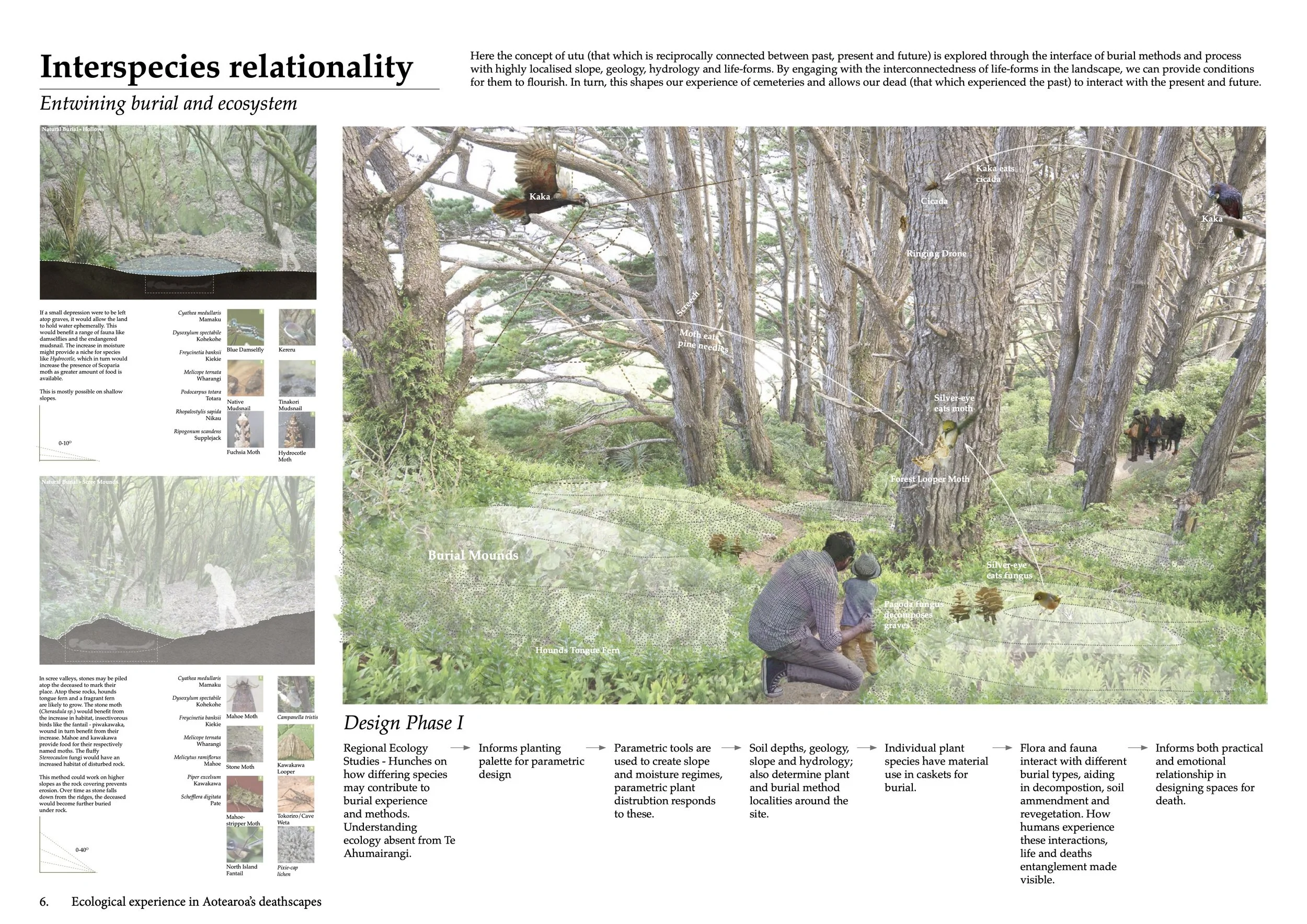Deathscapes in Aotearoa
The winner of the 2022 Resene New Zealand Institute of Landscape Architecture Awards; Student Category explores the land-use issue death creates, and offers ways to reshape our experience of death through our ecological and social engagement.
Logan Drummond’s Victoria University of Wellington thesis, “Ecological experience in Aotearoa’s deathscapes” points out that while population growth has increased pressure on land capacity for burial, most of New Zealand’s dead are buried in mono-functional lawn cemeteries originating from Europe.
Part of Logan Drummond’s 2022 Resene New Zealand Institute of Landscape Architecture Awards entry.
His research explores Te Ahumairangi in Wellington as the site of a new forested public space cemetery where existing landscape conditions may be interwoven with alternative burial methods, allowing for greater frequency of burial. Natural burial, aquamation, and cremation can be explored as they may reduce capacity pressure, pollutants and the negative landscape impacts of lawnscape cemeteries.
Lawn cemeteries have remained the dominant trend in burial, but require more land. Natural burial cemeteries are gaining popularity overseas, with shallower burial leaving the body in the most biologically active layer of soil, allowing for faster recycling by the environment. An endless number of further interments may be possible depending on the tenure of the grave plot.
In New Zealand, most forest is dense and multilayered, but burial in the forest has been largely ignored.
Natural burial and aquamation are explored in Logan’s research, as natural burial may improve the fertility of the land, resulting in ecologically rich forests. The absorption of aquamated remains in water catchments can also hydrate forested landscapes. Further, bio-degradable cremation urns can be buried almost anywhere using far less space.
“All of these methods help address urban and societal constraints that current cemeteries face,” he says. “All these methods allow for the return of the body in steeper lands, shallower soils, occupy less space, biodegradable, are ecologically beneficial and may have lower funerary costs.”
The research designates Kohatu Quarry, a relatively hidden part of Te Ahumairangi, as an ideal scattering place for liquid remains. Its overgrown, amphitheatre-like qualities make it a memorial-appropriate space, and all sides of the quarry are exposed rock, forming a useful spatial boundary for LiDAR.
Logan’s Lacusium design includes a boardwalk over aquamated remains that weaves between trees, with water from a waterfall flowing into aquamation basins. The channel is designed to overflow, creating a curtain wall of water dripping from the above canopy.
The judges described the thesis as a “masterful design investigation of an important land use issue, that of mono-functional lawn cemeteries.”
The judges highlight the fact that Logan’s research note “That city cemeteries are reaching capacities and seeks solutions. He responds by first considering the rituals from Te Ao Māori, and the arid ecological implications of current lawn cemeteries. His approach is the adoption of alternative burial processes.”
You can see more of the judging panel’s response in the video below.



